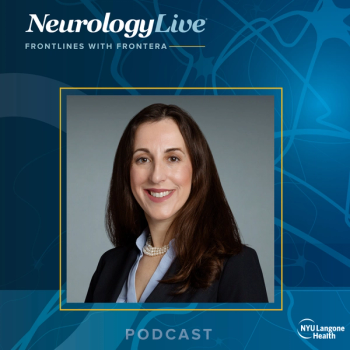
Looking at the Importance of Family-Centered Care Approaches in Pediatric Sleep Medicine
Funke Afolabi-Brown, MD, FAASM, chief executive officer of Restful Sleep MD, discussed the potential role of family dynamics and individualized planning in the effective management of pediatric sleep disorders.
Incorporating family-centered care into pediatric sleep medicine can significantly enhance both clinical and psychosocial outcomes for patients living with sleep disorders. In a previously published review of studies, researchers reported that found that family-centered care interventions during hospitalizations resulted in notable improvements in parental well-being, reduced stress and anxiety, increased knowledge, and participation.1 These findings underscored the potential importance of caregiver health and engagement in managing pediatric sleep disorders, for example, when caregivers experience reduced strain, they may be better positioned to implement and sustain sleep interventions at home.
An increasing body of evidence additionally highlights how family-centered care strategies, including education, emotional support, and shared decision-making, can possibly improve child adherence and sleep outcomes in home environments. For instance, a prior study implemented family-centered adaptations to overnight polysomnography, which led to improved procedural quality, increased family satisfaction, and reduced technical challenges.2 Thus, these proactive adaptations illustrated how family engagement in the diagnostic process could enable a more accurate assessment of sleep disorders, enabling tailored, feasible treatment plans that can integrate family routines and values.
At the recently concluded
NeurologyLive: How do routines in the family and parenting styles influence the development or even the treatment of pediatric sleep disorders?
Funke Afolabi-Brown, MD, FAASM: I think it's really fundamental, because when we look at the dynamics of sleep health in a child, we look at it in the context of the individual. So, there are genetic factors. There are other factors in that individual, but then each individual, especially children, exists in the context of a family setting. That really plays a huge role. What does the family structure look like? What does access to a bed, a bedroom, or safe housing look like? What do their values look like? Cultural practices, all those things play a huge role. And then, when you go up a little bit, you also look at society such as school, early school start times, and those dynamics. All those things impact the development of sleep disorders, as well as how we address or approach treatment.
What are some key considerations when designing a sleep treatment plan that can realistically fit into the daily routine of a family?
It's easy for us to make all our recommendations and give out these handouts and worksheets and things like that, but we have to consider the people on the receiving end. Not just the child, but the person who's going to be administering those strategies. It's usually the parent, right? It's usually a family member. And so, we have to be practical. We have to be pragmatic. We have to be realistic when it comes to designing strategies. I might tell you your child needs to be in bed by 6:30 p.m., but if you're working 2 jobs and you don't get home until 8 p.m., well, we're going to have to get very creative about how to figure that out or navigate it.
And also, you might have a family that doesn't necessarily believe in a bedtime routine or adhere to one. When we're looking at interventions, we're not just saying, “This child should go to bed at 8pm.” We're looking at like, how can we support the family to make sure there's some wind-down time, and there's some structure, and things like that? I would say being realistic, really looking at that family in front of you, and creating a plan that fits into their family structure or encouraging a different narrative in how they see sleep, is really important.
How do you approach educating and engaging parents or caregivers/guardians to help ensure long-term treatment success for children with sleep issues?
I think I would say you want to start off by meeting them where they are. There are some people who couldn’t care less about their child having some structure or not sleeping in their bed. But when you can tie it to something they’re struggling with maybe Mom is always tired, or Dad has a really hard time navigating work, and it’s because he’s up all night trying to put Johnny to sleep, then you can get buy-in. And until you achieve that goal, it’s really, hard to engage, because now they’re just checking off boxes. And we all know there are so many boxes you have to prioritize once you start checking them off.
So really helping families see that direct relationship between the habits and decisions they’re making around their child’s sleep and what’s happening in the home is going to be the most important piece of it. It’s not just about the handouts. Again, I’m a fan of handouts, but it’s beyond that. It’s really personalizing the care to every family and meeting them where they are and really identifying the things that are important to them and using that to set the goals for the family.
Was there anything else you wanted to mention that you think would be important for others to know?
Yes, I would say the important thing is to realize that there are a lot of studies out there that have shown the direct correlation between a child’s sleep and the family’s health, their well-being, and quality of life as well as work. When you think about the investment you're making in improving your child’s sleep, know that you are actually also investing in your own health, your own performance, and your own well-being.
Making that shift, hopefully that mindset shift, can help us when it gets hard. Because getting your child to sleep is not easy, identifying a sleep disorder, reaching out for help, and getting the right type of help is not easy. But just find the right motivating factor to help you achieve that goal.
Transcript edited for clarity.
REFERENCES
1. Hodgson CR, Mehra R, Franck LS. Child and Family Outcomes and Experiences Related to Family-Centered Care Interventions for Hospitalized Pediatric Patients: A Systematic Review. Children (Basel). 2024;11(8):949. Published 2024 Aug 6. doi:10.3390/children11080949
2. Zaremba EK, Barkey ME, Mesa C, Sanniti K, Rosen CL. Making polysomnography more "child friendly:" a family-centered care approach. J Clin Sleep Med. 2005;1(2):189-198.
3. Afolabi-Brown F. Pediatric Sleep and The Family: Integrating Family Dynamics, Clinical Care, and Treatment Success. Presented at: 2025 SLEEP Annual Meeting; June 8-11; Seattle, WA.
Newsletter
Keep your finger on the pulse of neurology—subscribe to NeurologyLive for expert interviews, new data, and breakthrough treatment updates.



















